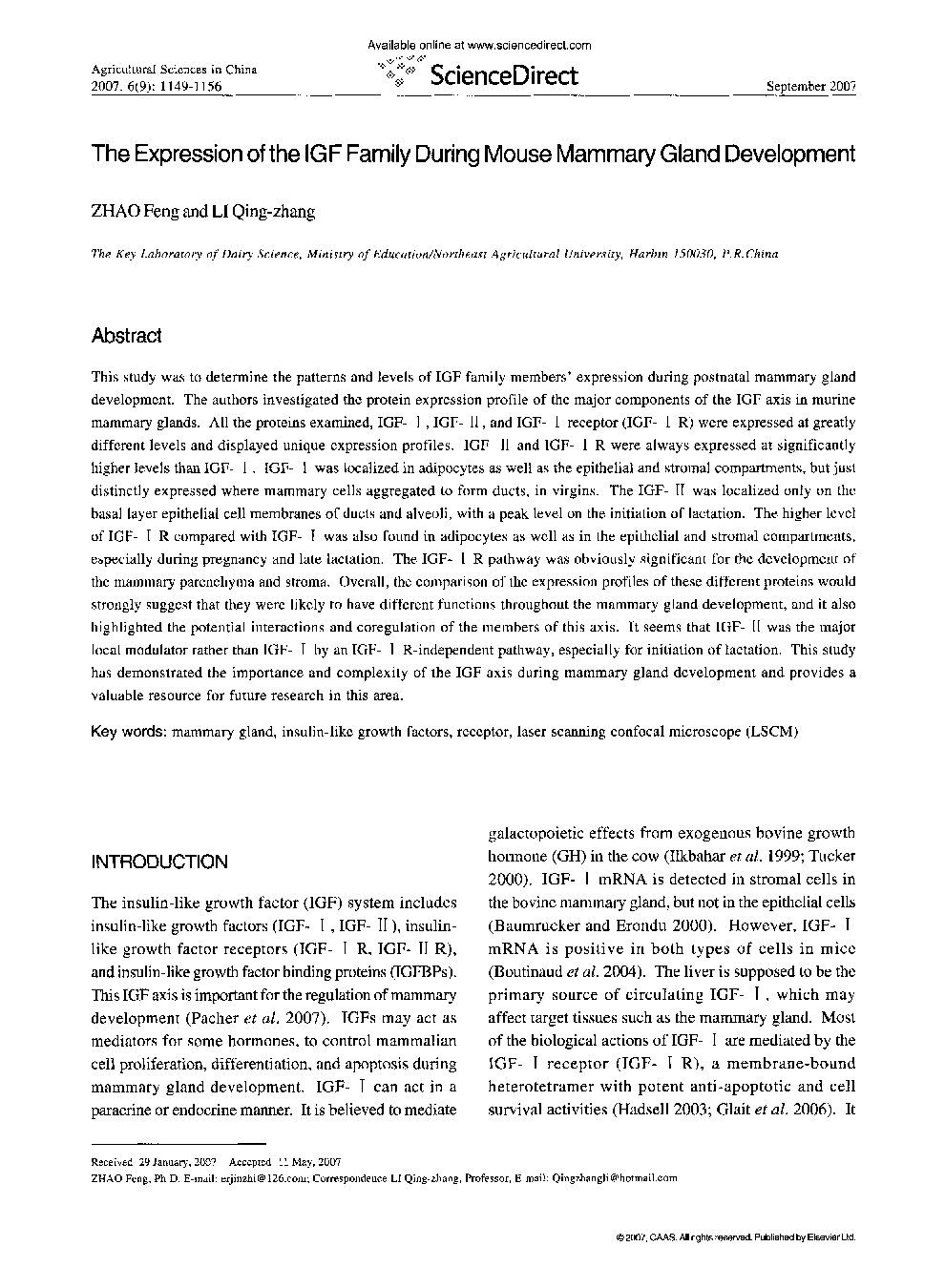| Article ID | Journal | Published Year | Pages | File Type |
|---|---|---|---|---|
| 4490767 | Agricultural Sciences in China | 2007 | 8 Pages |
This study was to determine the patterns and levels of IGF family members' expression during postnatal mammary gland development. The authors investigated the protein expression profile of the major components of the IGF axis in murine mammary glands. All the proteins examined, IGF- I, IGF- II, and IGF- I receptor (IGF- I R) were expressed at greatly different levels and displayed unique expression profiles. IGF- II and IGF- I R were always expressed at significantly higher levels than IGF- I. IGF- I was localized in adipocytes as well as the epithelial and stromal compartments, but just distinctly expressed where mammary cells aggregated to form ducts, in virgins. The IGF- II was localized only on the basal layer epithelial cell membranes of ducts and alveoli, with a peak level on the initiation of lactation. The higher level of IGF- I R compared with IGF- I was also found in adipocytes as well as in the epithelial and stromal compartments, especially during pregnancy and late lactation. The IGF- I R pathway was obviously significant for the development of the mammary parenchyma and stroma. Overall, the comparison of the expression profiles of these different proteins would strongly suggest that they were likely to have different functions throughout the mammary gland development, and it also highlighted the potential interactions and coregulation of the members of this axis. It seems that IGF- II was the major local modulator rather than IGF- I by an IGF- I R-independent pathway, especially for initiation of lactation. This study has demonstrated the importance and complexity of the IGF axis during mammary gland development and provides a valuable resource for future research in this area.
